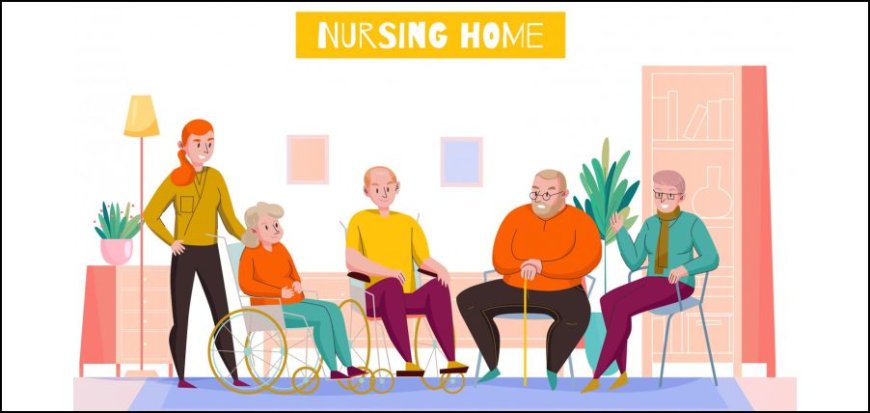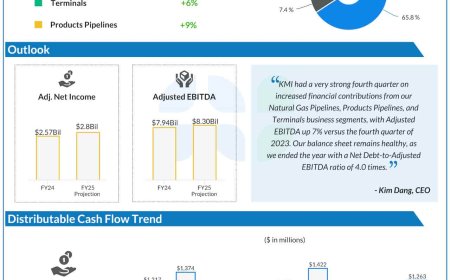Risk Management Strategies: What Businesses Can Learn from Nursing Home Abuse Cases?
Risk management is the backbone of every successful operation, yet its importance is often underestimated until a crisis arises. In industries like healthcare, particularly nursing homes, the stakes are extraordinarily high, where lapses in oversight can lead to catastrophic outcomes. Cases of abuse and neglect within nursing homes not only result in devastating consequences for […] The post Risk Management Strategies: What Businesses Can Learn from Nursing Home Abuse Cases? appeared first on Insights Success.

Risk management is the backbone of every successful operation, yet its importance is often underestimated until a crisis arises. In industries like healthcare, particularly nursing homes, the stakes are extraordinarily high, where lapses in oversight can lead to catastrophic outcomes. Cases of abuse and neglect within nursing homes not only result in devastating consequences for victims but also lead to severe legal and reputational repercussions for the organizations involved.
These situations serve as powerful examples of how inadequate risk management can dismantle trust, tarnish reputations, and threaten the viability of even the most established institutions. However, the same principles that can help prevent such failures in nursing homes are equally applicable across industries. From fostering accountability to implementing proactive strategies, the lessons learned in these high-stakes environments can inspire businesses to create more resilient and trustworthy operations.
Understanding Risk Management: Lessons from Nursing Homes
The Human and Financial Costs of Poor Oversight
Nursing homes face unique operational challenges, where the consequences of risk management failures are profoundly human and financial. From understaffing to lapses in reporting adverse events, these shortcomings create environments where abuse and neglect can occur, leading to legal repercussions and public trust erosion.
Key Risk Areas Highlighted by OIG
Reports by the Office of Inspector General (OIG) reveal several persistent problems in nursing homes that illustrate the broader impact of inadequate risk management:
- Staffing Challenges: Insufficient staffing levels often result in neglect and inadequate care, leaving residents vulnerable to harm.
- Documentation Failures: Critical safety records are frequently incomplete or falsified, leading to gaps in accountability and oversight.
- Inadequate Background Checks: Poor screening processes allow unqualified or unsafe individuals to work in direct care roles.
These systemic issues jeopardize not only the safety of residents but also the financial and reputational health of nursing homes. Facilities facing these challenges risk substantial legal liabilities, regulatory fines, and long-term damage to their public image.
Lessons for Business Leaders
The lessons from nursing homes are clear for business leaders: Risk management isn’t just about avoiding crises—it’s about fostering a culture of accountability and continuous oversight.
Just as nursing homes need to implement robust mechanisms to prevent abuse, organizations across all sectors must proactively identify, evaluate, and mitigate risks. Regular audits, staff training, and transparent communication channels are key strategies that any organization can adopt to safeguard stakeholders and maintain operational resilience.
Proactive Risk Assessment: Spotting Vulnerabilities Before They Escalate
The most effective way to manage risks is to identify and address them before they develop into crises. In nursing homes, proactive risk assessment can make the difference between providing safe, quality care and facing severe legal or financial consequences.
Key areas that require regular assessment in nursing homes include:
- Staffing Levels: Ensuring sufficient staff-to-resident ratios to prevent neglect and maintain care quality.
- Resident Safety Protocols: Evaluating processes for medication administration, fall prevention, and emergency response.
- Compliance with Regulations: Monitoring adherence to federal and state laws, which vary by region and directly impact liability risks.
Nursing homes can spot and rectify these vulnerabilities early by implementing thorough audits and continuous monitoring. Similar assessments are essential for businesses in other sectors to mitigate risks related to operations, personnel, or compliance.
Practical Steps for Proactive Risk Assessment
- Conduct Regular Internal Audits: Identify gaps in operations or compliance through structured reviews.
- Use Data-Driven Insights: Leverage analytics to monitor performance and predict potential risks.
- Engage External Experts: Periodic consultations with specialists can provide unbiased evaluations and recommendations.
These measures help prevent crises, build a framework for sustainable growth, and build trust with stakeholders.
Regional Risk Comparisons
Risk management is not a one-size-fits-all approach. Regional differences in laws, economic conditions, and cultural norms significantly influence how organizations address vulnerabilities.
Nursing homes in Oxnard, California, offer a compelling case study to understand how localized factors shape risk.
In California, strict state regulations require nursing homes to maintain higher staffing ratios and adhere to rigorous reporting standards. However, even with these regulations, cases of neglect and abuse persist, often due to lapses in oversight or insufficient staff training. Legal professionals, such as an Oxnard nursing home abuse and neglect lawyer, frequently address instances where these safeguards fail, helping families navigate the legal landscape and hold institutions accountable.
When comparing Oxnard to states like Texas or Florida, stark contrasts emerge:
- California: Known for its stringent regulations, facilities must comply with detailed care standards, but enforcement varies, leaving some homes vulnerable to litigation.
- Texas: Offers more lenient oversight, which can lead to increased reports of neglect but fewer regulatory penalties for facilities.
- Florida: Faces unique challenges due to its high population of elderly residents, often resulting in overwhelmed facilities struggling to meet demand.
Understanding these regional differences is critical when choosing the right care for seniors, as regulations and quality standards can vary significantly between locations.
Training and Accountability: Building a Culture of Prevention
One of the most effective ways to mitigate risks in any organization is by fostering a culture of accountability and ensuring employees are adequately trained to perform their roles. In nursing homes, neglect and abuse often stem from gaps in training and unclear accountability structures, leaving residents vulnerable to harm.
Key steps nursing homes take to prevent these issues include:
- Comprehensive Onboarding Programs: New employees receive detailed training on safety protocols, resident care, and ethical guidelines.
- Ongoing Education: Regular workshops and certifications ensure that staff remain up-to-date on best practices and legal requirements.
- Clear Accountability Systems: Defining roles and responsibilities helps eliminate confusion and ensures staff are held accountable for their actions.
Organizations that prioritize training and accountability not only reduce risks but also position themselves as trustworthy and reliable entities. With well-trained employees and clearly defined roles, these organizations can prevent mistakes, foster a culture of excellence, and consistently meet the expectations of their stakeholders.
Crisis Management: Responding to Risk When Prevention Fails
While prevention is the cornerstone of effective risk management, even the best-prepared organizations can face unexpected challenges. Nursing homes that fail to address risks in time often find themselves in crises, where swift and strategic action is essential to limit damage. Crisis management builds on the foundation of proactive measures, enabling organizations to respond effectively and minimize long-term repercussions when issues arise.
Key components of effective crisis management in nursing homes include:
- Immediate Damage Control: Addressing the situation promptly, such as removing negligent staff or providing support to affected residents and their families.
- Legal Intervention: Collaborating with legal experts to navigate regulatory requirements and litigation effectively, ensuring accountability and compliance.
- Transparent Communication: Keeping stakeholders informed with clear, honest updates to rebuild trust and demonstrate responsibility.












































